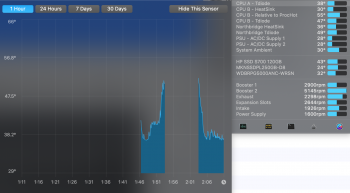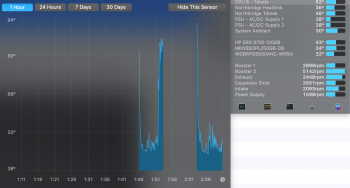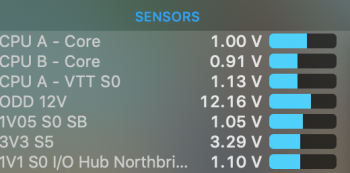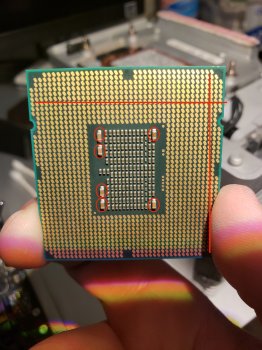I've tried re-applying thermal paste 2x.
See attached files for spikes. CPU B is running 15-20c hotter witch CPU B fan at max, and seeing spikes over 90c at startup and when I tried to run Geekbench!
What should I do?
MacPro 5,1. 2 x 3.33 GHz. Booting Mojave off PCIe SSD. RX580. Boot ROM 141.0.0.0.0. 24GB RAM.
[doublepost=1561152493][/doublepost]


See attached files for spikes. CPU B is running 15-20c hotter witch CPU B fan at max, and seeing spikes over 90c at startup and when I tried to run Geekbench!
What should I do?
MacPro 5,1. 2 x 3.33 GHz. Booting Mojave off PCIe SSD. RX580. Boot ROM 141.0.0.0.0. 24GB RAM.
[doublepost=1561152493][/doublepost]
[doublepost=1561152671][/doublepost]More showing CPU B temperature volatility w/max fan on CPU B - no load - not working on this computer.I've tried re-applying thermal paste 2x.
See attached files for spikes. CPU B is running 15-20c hotter witch CPU B fan at max, and seeing spikes over 90c at startup and when I tried to run Geekbench!
What should I do?
MacPro 5,1. 2 x 3.33 GHz. Booting Mojave off PCIe SSD. RX580. Boot ROM 141.0.0.0.0. 24GB RAM.





